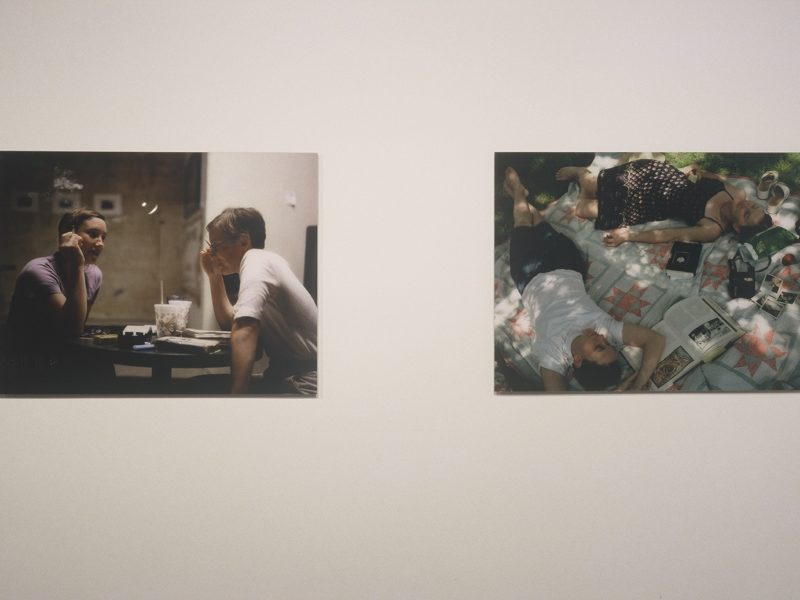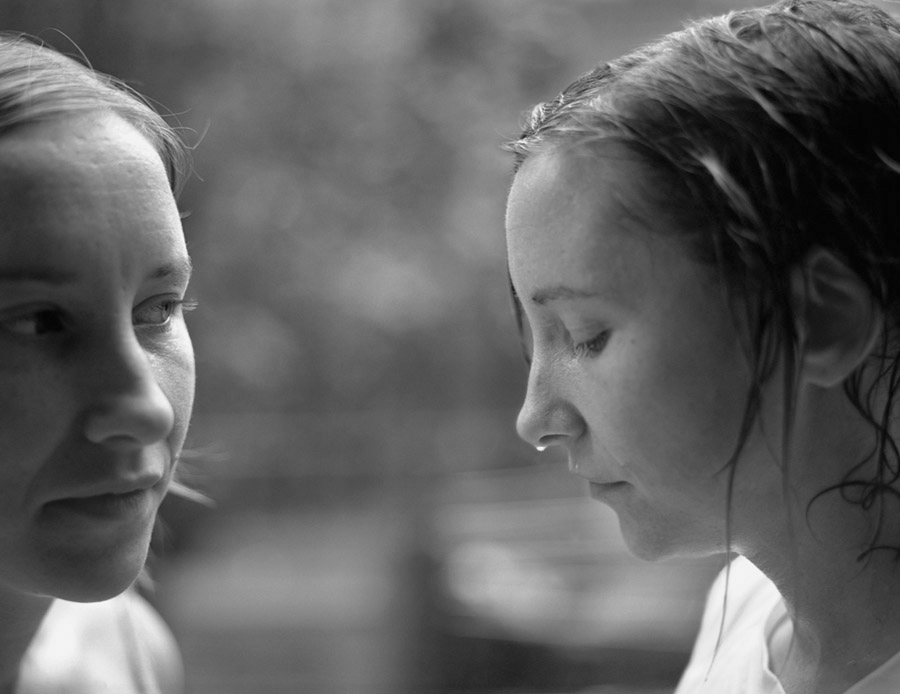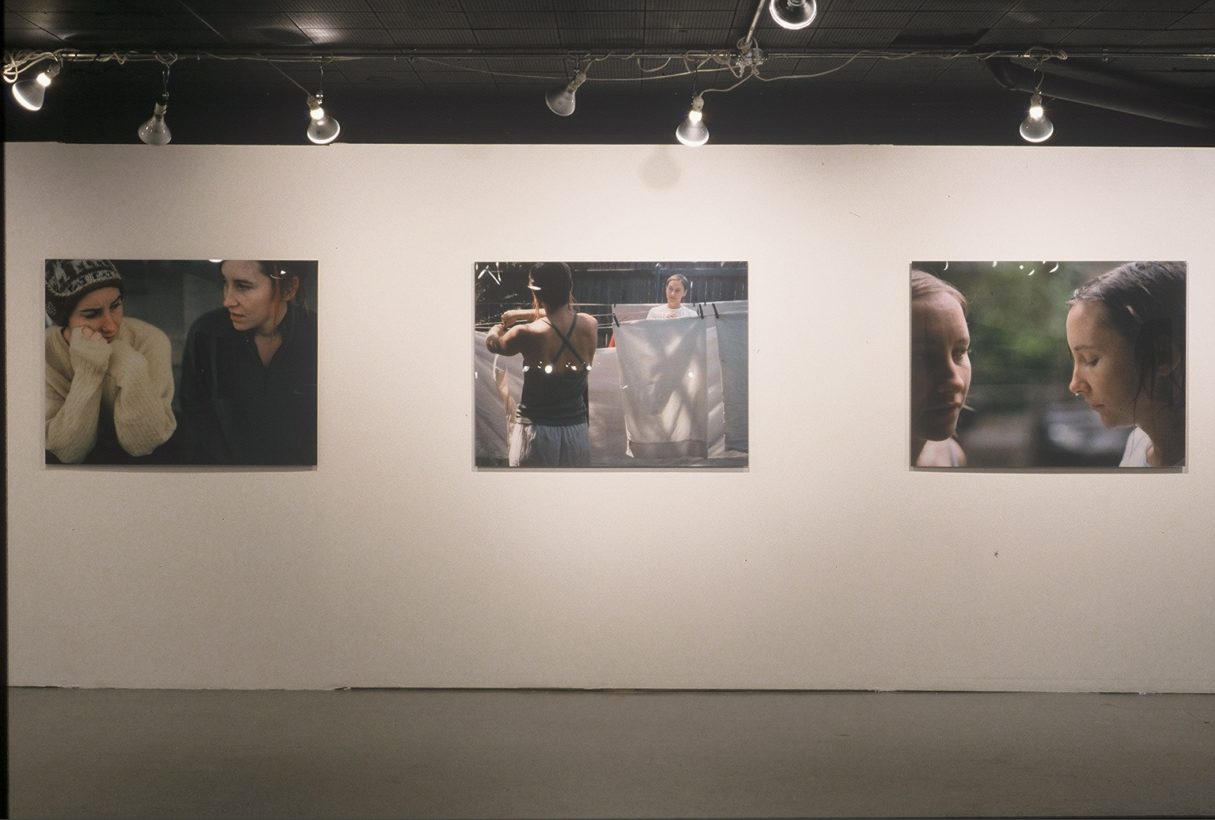Archive
Kelli Connell Double Life
Kelli Connell’s installation in the mezzanine gallery of Lawndale Art Center consists of 10 medium-scale color photographs in which the artist has digitally manipulated photo negatives to combine two images of the same model in a single print.Connell can thus be considered a member of whatThe New York Times critic RichardWoodward recently called “The Photoshop Generation.” The real interest of these pictures, however, lies not in this act of technical trickery, but rather in the vivid form Connell gives to the divided, shifting complexity of the self and identity.
In pursuing these issues, Connell’s work falls within a tradition of Surrealist photography in which cut-up, fragmented figures and double-exposures gave form to a multifaceted, dynamic unconscious, replacing the concept of an undivided, original self. It also undoubtedly relates to the role-playing and gender politics of Cindy Sherman’s series of film stills. But Connell’s presentation of multiplicity is all the more uncanny because of the seamless incorporation of the two selves into an otherwise believable visual image. Thus, through signs of body language and expression we watch the selves play out the dynamics of a relationship with each other: they flirt at a café, picnic together, make out, fight, and in the end make up. It’s the old tale of self gets self, self loses self, self gets self back again. Like a movie, there’s even the obligatory frontal nudity scene.The disconcerting quality of Connell’s presentation of the same person in conversation, and more, with itself is in some ways all the more effective because of this familiar structure. I found that I simply couldn’t help but read the figures as two separate characters in a story with one part of my mind, even as the other part knew that they were the same physical being. By means of this tension Connell enacts a split in the viewer’s self, just as she has split the model, and herself, in the act of creating photographs from multiple exposures (the artist also clearly finds in her model something of a surrogate for her own selves).
Even more, however, because Connell shows the model from a variety of different angles, with different clothes and hair styles, it becomes impossible to track the same figures in separate images. The result is thus not so much the representation of a split personality, but, much better, of the many different sides of the self, all pushing and pulling towards and away from each other, but always separated like magnetic poles. In this way, Connell may also do herself a disservice by incorporating these pictures into are latively clichéd narrative, even as that incorporation allows her to play on our expectations of photography’s ability to tell a story. Photographs such as Convertible Kiss, with its tender, throbbing energy, reveal an ability to capture human emotion and character on an extraordinarily subtle, yet powerful level. More anecdotal pictures, such as Brickhaus Café and Kitchen Tension, seem to lack that subtlety as they are forced to carry more defined narrative content.
The photographs are far more beguiling and suggestive when the narratives work on a smaller scale and are less transparent.Sunday Afternoon, for instance, makes overt the sexuality that was implied in the half-eaten apples and furtive polaroids (more selves!) of Picnic, and advanced to foreplay in Convertible Kiss. In Sunday Afternoon, the half-naked self kneels on a couch over her nude, supine self. Preserving this state of suspended separation, however, the picture speaks in part to the failure of sex to provide the connection promised in the pulsing optimism of Convertible Kiss. It seems that, as Freud said, there is no sexual relation, even with one’s own selves. Connell’s work is at its best, finally, in the consecutive images Interrupted and The Conversation. In the former picture, the selves simultaneously regard a third term, a man, shown with his back to us. The radically slanting perspective of the wall behind the figures gives the scene an emotional intensity. The subsequent picture gives vivid, almost raw form to insecurity, ambivalence and anger, perhaps caused in part by this intrusion, as the selves huddle in painful conversation.
The doubled selves of these pictures undoubtedly provides much of their strangeness and intellectual energy, but they would appear flat and gimmicky were it not for Connell’s ability to evoke, but not define or circumscribe, these ineffable states of mind and emotions in glimpsed moments and seemingly ordinary poses.




